Analysis
Berlin’s Gallery Scene Is Eroding. Its Tech Scene Is Exploding. Will These Young Startup Elites Ever Start Buying Art?
We take a deep dive at the German capital's burgeoning industry.
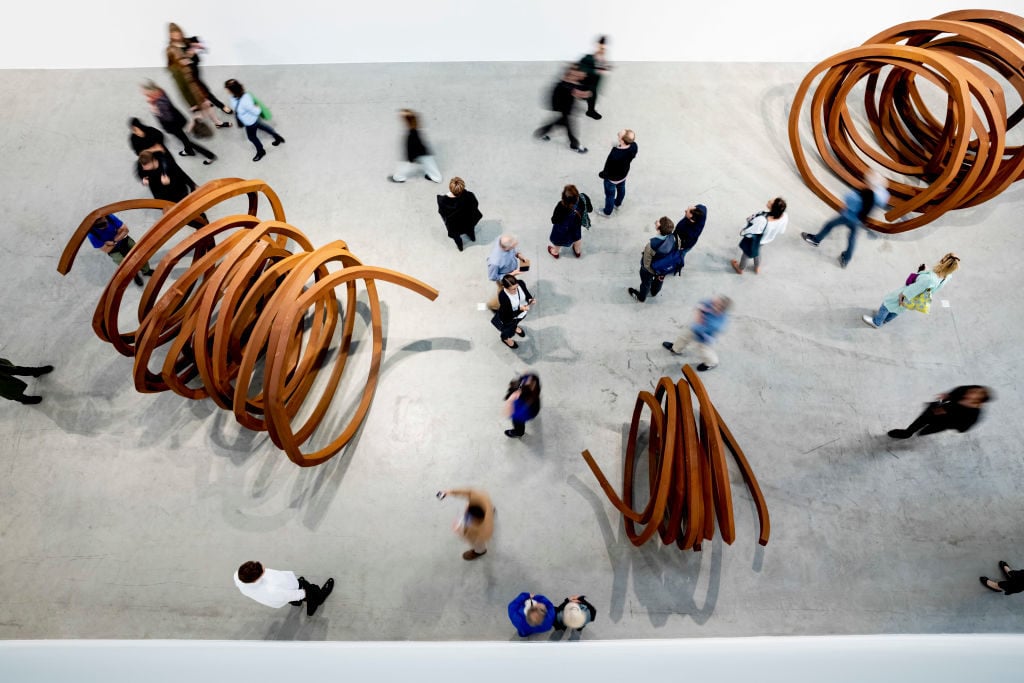
We take a deep dive at the German capital's burgeoning industry.

Kate Brown

Spend time at enough Berlin gallery openings, and it won’t take long for conversations to turn bleak. Recurring talking points include the German capital’s soaring real estate prices, the ongoing wave of gallery closures, a financial crunch facing the city’s artists, and a lack of art collectors. A recent survey of Berlin-based art professionals found that the majority cannot make a living wage from their creative work.
But while the arts struggle, another sector in Berlin—the tech industry—is booming. It is said that a startup is founded in the city every 20 minutes. By 2020, the sector is expected to create 100,000 new jobs in a metropolis that is—for now—far cheaper than other global start-up hubs. It’s also hungry for talent. As one tech founder put it, “You don’t need a German passport or an Ivy League diploma to succeed here.”
This influx of young people and new money should be good news for the local art industry but, so far, the two sectors have clashed more than they have cooperated, and animosity is rising. Last fall, Google retreated from a plan to open an office in Berlin after vehement outcry from anti-gentrification activists, including a number of artists. Meanwhile, rents in the city have doubled over the past decade, and are continuing to rise.
Amid the tension, a small group of art professionals and tech-industry workers are trying to build a bridge to connect the two communities. Whether they can succeed is an open question, but they both tend to agree that the survival of Berlin’s art world—not to mention the vibrant character of the city itself—depends on it.
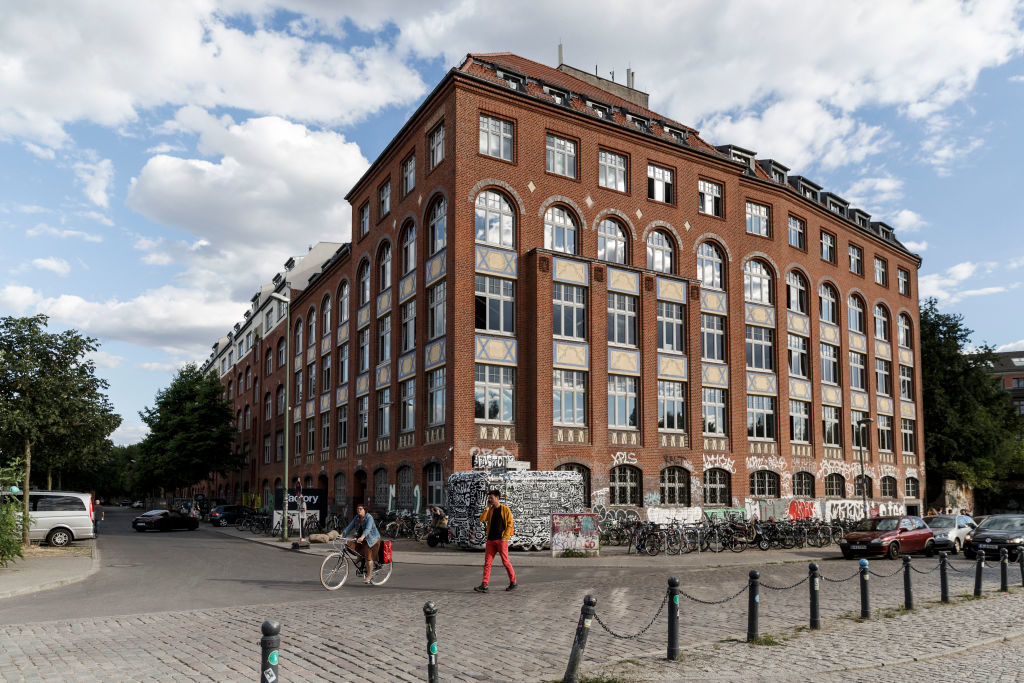
Pedestrians passing the new IoT (Internet of Things) Hub Berlin incubator location in The Factory in Kreuzberg district. Photo: Carsten Koall/Getty Images.
The change in Berlin is tangible. Throughout the city’s network of cobblestone streets, chic co-working spaces have popped up inside industrial warehouses with the speed of Starbucks in the 1990s. WeWork, Betahaus, and Factory are just a few of the names now splashed against historic brick facades. One of Factory’s spaces recently made headlines for ousting artists from a building and then branding the space as “abandoned.”
To get a better sense of the tech industry’s current relationship to art, I went to meet tech insider Andrew Haw, who I found sitting in a Hawaiian shirt with a laptop open at a cafe inside the cheekily titled co-working space Silicon Allee. (He is the company’s so-called “community lead.”) As I sat down with my flat white in a cup crafted from old coffee grounds, I realized he was one of the first startup entrepreneurs I have talked to at length, ever.
In Haw’s view, it’s only a matter of time before tech and art embrace one another. After all, he says, startups are creative endeavors, too. “The art community in Berlin can often see the startup community as not really fitting—rightly or wrongly—into their scene,” he says. “But in five years’ time in a wealthier Berlin, some of these startups could be sponsoring art events.”
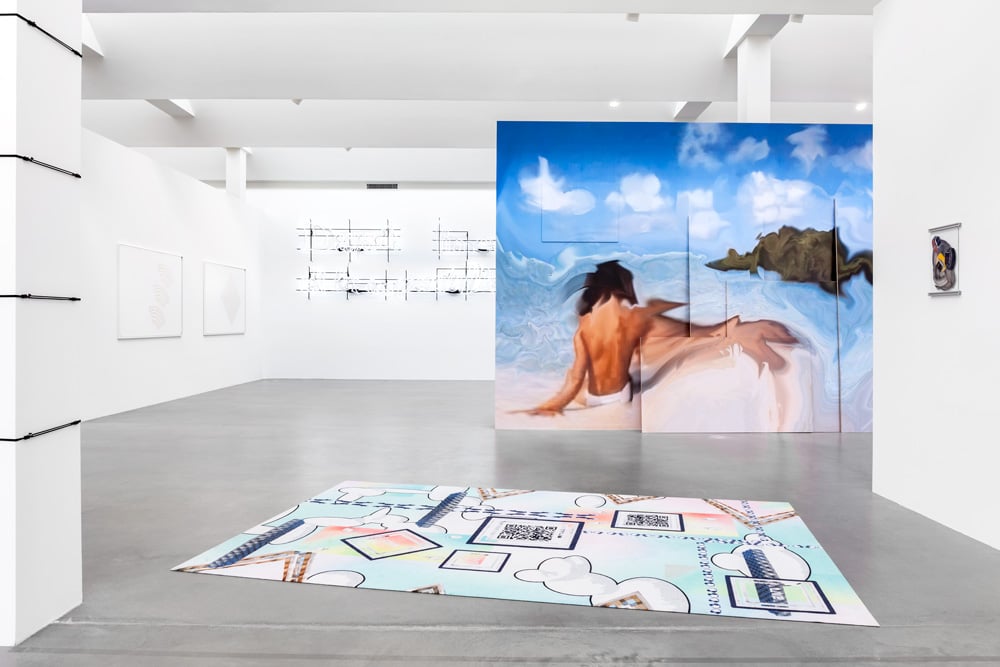
“Behind the Screen” group exhibition at Kindl Center for Contemporary Art. Photo: Otto Felber
Right now, such a future seems hard to imagine. Several art dealers I spoke said that their collector bases only had a small handful of buyers from tech businesses, if any at all.
“This is something we see in San Francisco, too, but in Berlin, the problem is even larger,” says software entrepreneur and art collector Markus Hannebauer. “There are not many successful tech founders in Berlin who can afford spending on art. Art does not serve as a good investment, so they tend to focus on real estate.” Only startups that have existing relationships with creative industries—like Ableton, a music sequencer, EyeEm, an AI-powered photography marketplace, or audio platform SoundCloud—are natural candidates for crossover, he says.
The art-market economist Magnus Resch, who has founded several companies in Berlin, concurs. “I am always surprised to see my tech friends buying new houses or apartments, and then their walls are empty,” he says.
At the same time, entrepreneurs who are looking to blend art and tech are often hoovered up by larger tech firms before their projects get off the ground. This brain drain not only keeps the sectors separate, it is also “keeping our systems kind of behind technologically,” one prominent Berlin art dealer says.
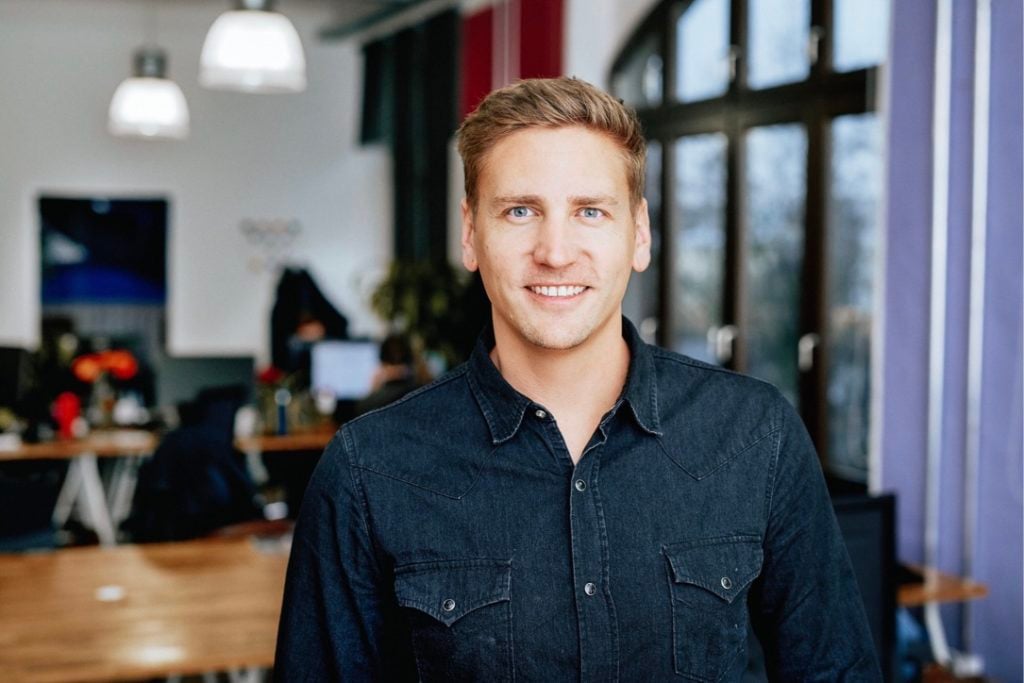
Philip Hartmann, Founding Partner Rheingau Founders.
Sitting at Silicon Allee in Mitte, Haw refers the neighborhood around us as “NoTo” (abbreviated Manhattan-style for the street that cuts it off from the rest of the surrounding area, and short for “North of Torstrasse,” apparently). Despite living here for years, I had never heard the term. In my first sit-down with a tech professional, one thing becomes clear: We’re living in parallel worlds.
That’s part of the problem when it comes to the industrial fronts of tech and art in Berlin—the two sides are not talking all that much, or all that deeply. And some say the art world shoulders some of the blame.
“These guys just don’t get invited to art-world events,” Resch says. “The Berlin gallery scene is celebrating itself, and they are very exclusive. It almost prevents tech people from entering it. Why don’t they reach out to new buyers? Why don’t my friends get invitations? Why aren’t there more panels involving the tech scene? If you want to include them, you have to got to invite them.”
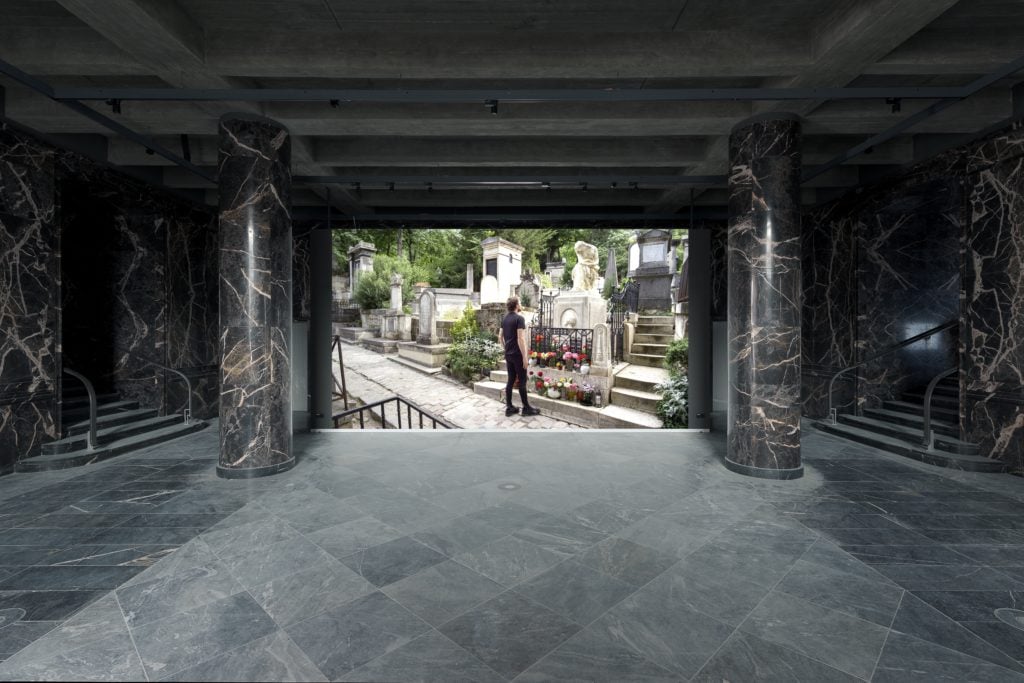
Fluentum (installation view), 2019. Photo: Moritz Hirsch. Courtesy of Fluentum, Berlin.
There are good reasons for both sides to make an effort. About 30 art dealers are closing shop in Germany every year, according to Kristian Jarmuschek, chairman of the Federal Association of German Galleries and Art Dealers. At the moment, the city estimates that there are 20,000 artists living and working here, but that number could shrink if the conditions become increasingly unlivable.
“As the creative backbone slowly drains out, people that move to Berlin will be left without that what made the city so attractive to them in the first place—a rich and diverse cultural scene,” Hannebauer says. “And [tech] companies—in the long term—might lose one of their biggest assets: happy coworkers.”
Still, some are skeptical that tech professionals will convert to art-buying quickly enough, or in large enough numbers, to counteract the rising cost of living and gentrification to which they are contributing. “I don’t see this tech influx as likely to be at all positive or relevant to the art scene here,” says one gallery worker who is based in Berlin but from San Francisco.
With an understanding of the high stakes, some players are working to bridge the divide between the art and tech worlds. This spring, Hannebauer, the software entrepreneur, opened Fluentum, a space dedicated to his private media art collection, in a palatial building on the outskirts of the city. For Berlin Art Week this September, he is inviting two notable art dealers in the city, Alexander Koch and Nikolaus Oberhuber from the gallery KOW, to curate a group show. The gallery just moved from Mitte—sorry, I mean NoTo—earlier this year, an area that has doubled in rent, according to a report in Monopol.
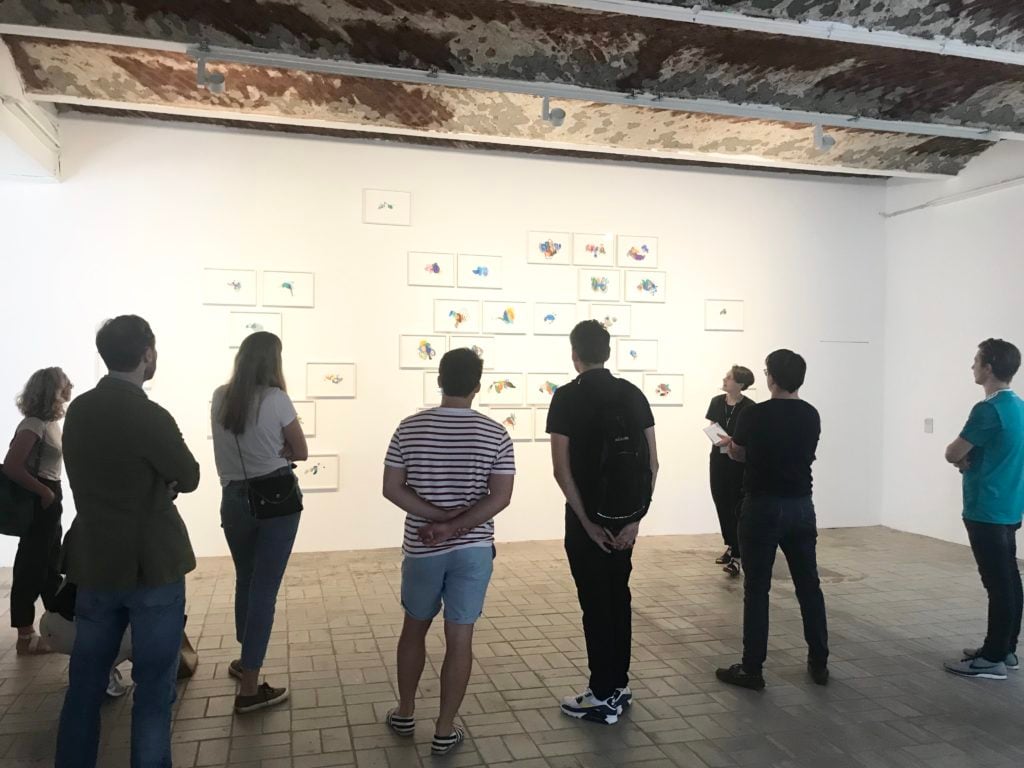
Start-up “Get together and Tour” at Kunst-Werke Berlin, which are organized at various locations by the gallery OFFICE IMPART.
Meanwhile, Philipp Hartmann, a venture-capital investor and founding partner of Rheingau Founders, has opened a small pop-up art space inside his burgeoning startup consulting company. The venue, called the Wall, is curated in collaboration with the veteran gallery Eigen+Art Lab. Members of the startup scene and the art scene are invited to mingle at its intimate openings. “This way we can support young aspiring artists and help start a dialogue between start-ups and art lovers,” Hartmann says. “My hope is to see many more of these initiatives in the years to come.”
For some, tech’s explosive energy and out-of-the-box thinking recall the excitement of Berlin’s burgeoning art scene in the decades after the fall of the Berlin Wall. “Berlin is a city that attracts creative and curious minds and there are similar characteristics between an artist’s mind and a tech mind,“ Haw says. He speaks about networks, creating space, and collaboration, as well as the relentless pursuit of funding—all terms that I find myself using all the time to speak about the art industry.
“I have felt a close connection to the ways that a start-up operates, as opposed to a regular company,“ says Berlin art dealer Tanja Wagner. She points out that, like a gallery, venture capital firms tend to float several start-ups at once. They might believe in all of them, but most won’t survive; the economic model for both art dealers and tech investors depends on at least one taking off.
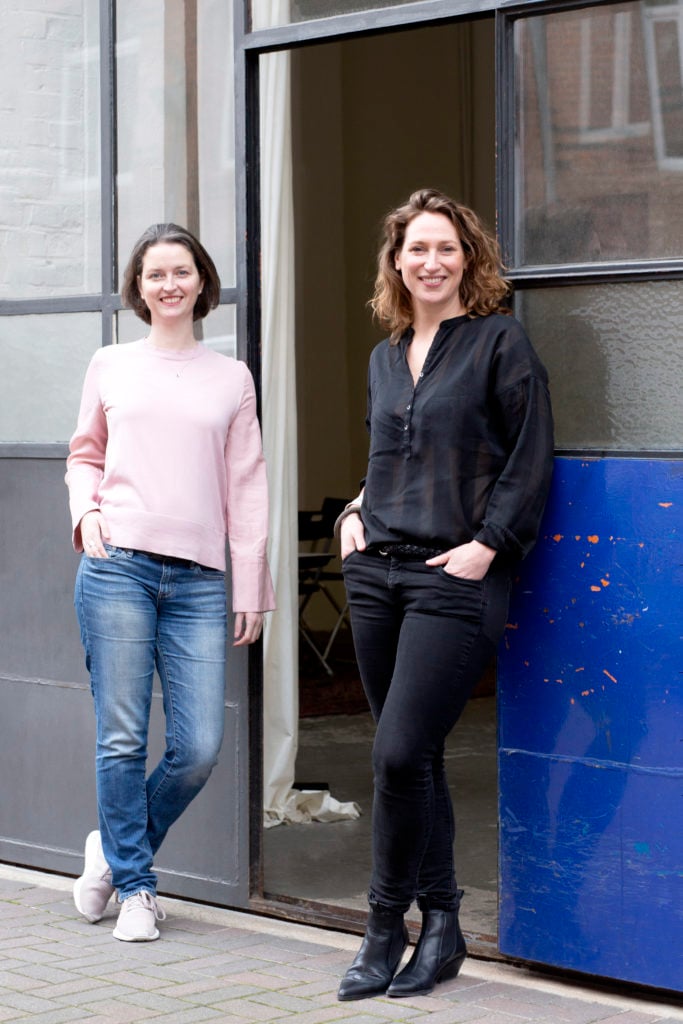
OFFICE IMPART’s Anne Schwanz (left) and Johanna Neuschäffer outside their location. Photo: Charlotte Spiegelfed
A duo of art dealers is also working to penetrate the wall separating the art and tech worlds. Last year, Johanna Neuschäffer and Anne Schwanz, two industry veterans who had previously worked at Eigen+Art, established Office Impart, which is not a classical gallery but a gallery format with a “representative office.” It aims to change the way dealers work with artists and collectors amid a rapidly transforming local and global economy.
“Berlin is built by creativity and change,” Neuschäffer says. “Standing still is death; We cannot do everything in the next 10 years what everyone [else in other industries] did 30 years ago.”
Their office is far from the gallery districts, nestled in a renovated brick building that houses other tech businesses. We met in the sun just outside the entrance. (This is a post-gallery business, after all.)
Part of their business plan is to minimize overhead by partnering with individual artists on projects beyond the confines of a gallery space. (Their most recent exhibition, “Behind the Screen,” featured work that examines how our behavior is shaped by technology.) The duo has also been working to introduce tech-industry people to art by hosting regular lunch-hour tours of shows and publishing a newsletter, called the Weeker, to help newcomers navigate local art events.
“We are very positive about the changes in Berlin,” Schwanz says. “There is still overall money in the market. People being interested in art, wanting to live with art—this will never stop. There are so many startups and so many investors coming in, however you can only grasp them if you make them understand what is going on here, and take them to the relevant places.”
As we were chatting, a man in a crisp shirt dashed by with a phone and suitcase in hand, his fancy-looking watch glinting in the sun. Seeing us, he stopped short. “Hey! What are you guys doing here?” he says, and the three of them catch up. He informs the dealers that he is building a new company and delivers a quick elevator pitch for a new high-def screen. “Could work for art maybe!” he muses before jetting off through the courtyard.
We all laughed at the chance encounter. “We believe that the analog meeting, the analog discussion is the best way forward in digital times,” Schwanz says. She notes that they often hear people from the tech world say they don’t understand art. “When they think of art, it is painting on a wall,” she explains. “But in fact, there are many artists that are just as technologically engaged as these tech entrepreneurs. You have to take the time to educate people outside the scene—and it takes a while—but it eventually works.”